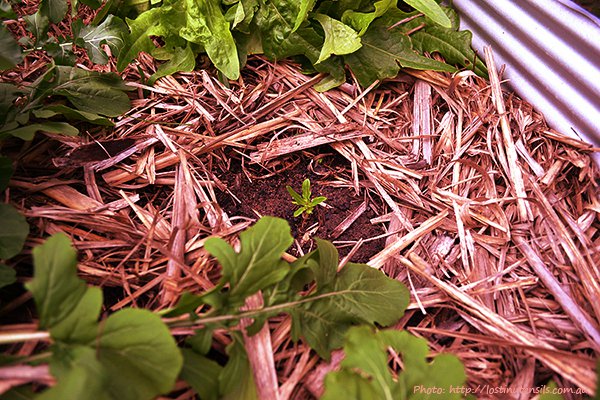Great gardening ideas of the past
What’s old is new, and nowhere does this seem more true than in the garden. The origins of many tried and true gardening tips lie in the not-so- distant past, when a day’s tasks were timed by the sun’s journey across the sky and the year was mapped by the seasons.
Finding easier, better and less harmful ways to garden is as easy as looking back to innovative gardening methods of the past. To get ahead in your garden, look back and try these old favourites.
No- dig gardens
Throw away your spade! There’s no need to dig in a no-dig garden (obvs), invented in the 1970s by Sydney gardener Esther Dean. Create a garden bed above ground by adding layers of organic material to make a lovely living mulch – much like putting together a rich and creamy trifle or lasagne! Try layers of newspaper, straw, manure and compost, as high as you like – it’s the perfect solution if your soil is poor. We all know that the best way to attract weeds is to disturb the soil – so leave it be!

Companion planting
Ditch those pesticides! Planting the right combination of plants has been the secret to successful gardening for centuries. Some plants help each other grow better by attracting helpful insects and repelling harmful pests, by providing nutrients to alter a soil’s pH or by offering shade or support. So encourage dandelions to take up root next to your tomatoes, grow broccoli with cucumbers, tomatoes with cabbages, onions and carrots, dill and Brussels sprouts. And remember: don’t bother planting anything at all beneath a black walnut tree, as it just won’t thrive.

Seed harvesting
Did you know that an American 18th-century millenarian restorationist Christian sect (dare you to say that three times quickly!) called the Shakers transformed the horticulture industry? From 1790 to 1890, the Shakers sold top- quality packaged vegetable seeds from their communal settlements in upstate New York and Connecticut, becoming renowned for their onion, beet, carrot, cucumber and squash seeds. They were the first to distribute the seeds in paper envelopes, complete with instructions for planting and cooking.

Just like the Shakers, you can save seeds from your favourite varieties of tomatoes and capsicums – particularly heirloom varieties. Store the dried seeds in a labelled envelope, perhaps in the fridge, then sow them next season, and voila! You have next year’s crop for free.
Weed mats
Using black plastic sheeting to suffocate weeds is a pesticide-free way of eradicating weeds but it’s anything but good for the planet. Just as our forebears might have used hessian sacking, choose biodegradable, organic matting instead of plastic – once the matting has done its job of suppressing weeds, it will welcome worms and encourage healthier soil before joining the soil as compost.

Edna’s potatoes
Hate those orderly rows of zinnias and azaleas? Want to add a bit of random charm? Do as revolutionary 1930s uber-garden designer Edna Walling did – grab a handful of potatoes, close your eyes then throw the potatoes over your shoulder into the garden. Wherever a potato has landed, plant some daffodils or narcissus for the ultimate in natural gardening design.

Kitchen mulch
Nothing went to waste in our parents’ and grandparents’ kitchens, and there was method to their thriftiness. So, stop – don’t throw out those leftovers! They can be recycled as ready-to- hand mulches. Throw your coffee grounds and tea leaves on your flower beds, scatter ash from your open fire onto your fruit trees, bury banana peels around your roses, crush eggshells around your tomatoes and leave a bowl of beer out to farewell snails and slugs.

Main image: Martin Kníže



